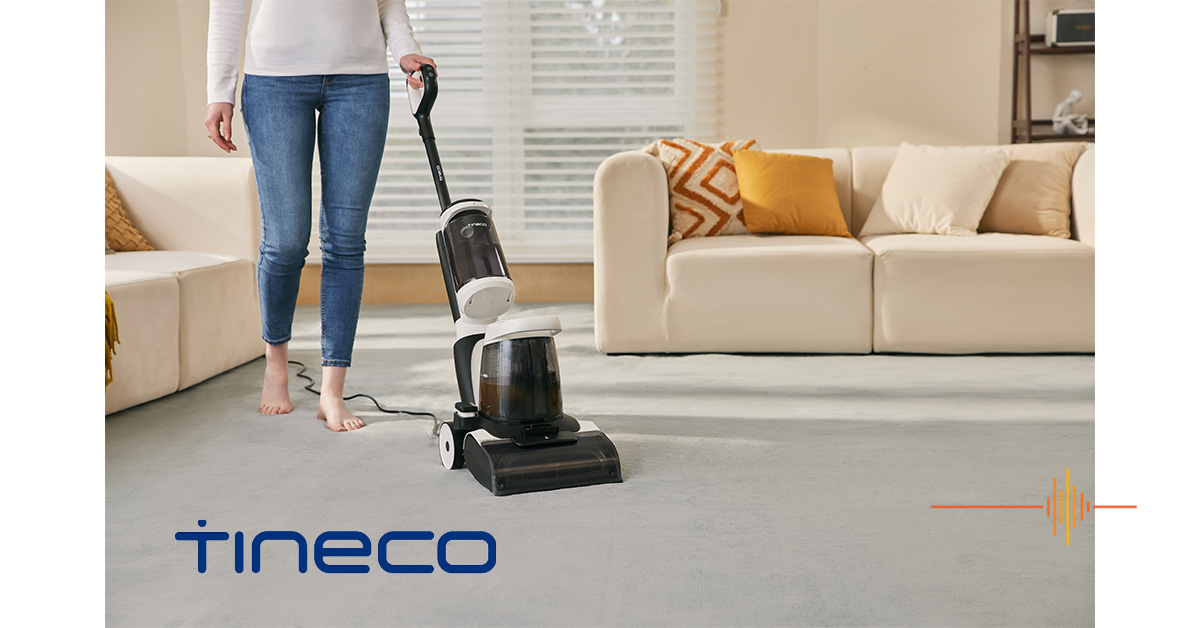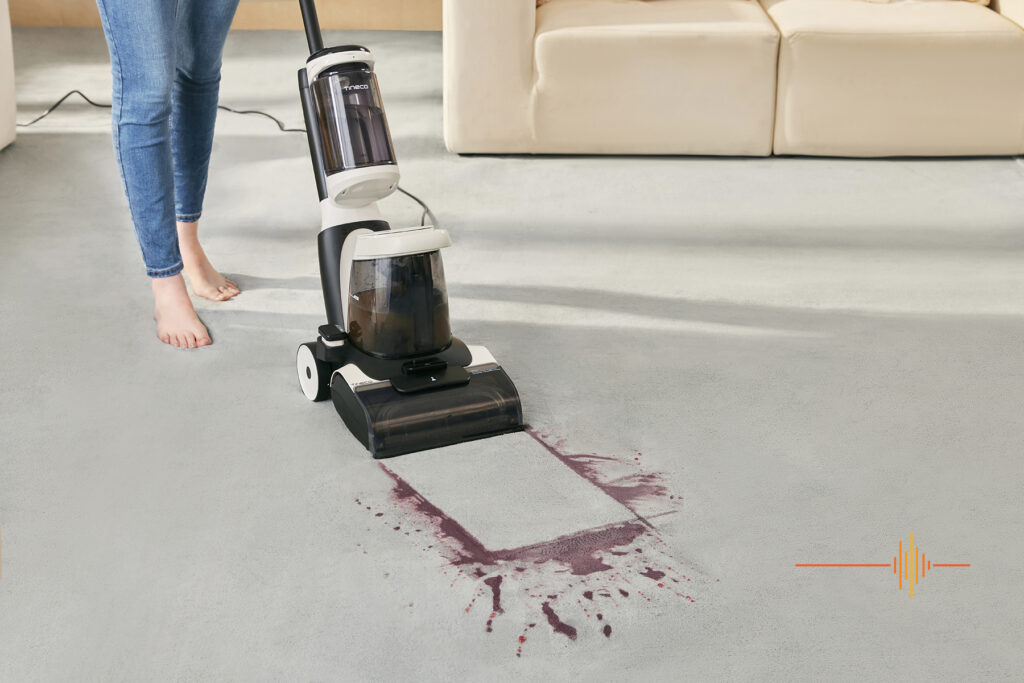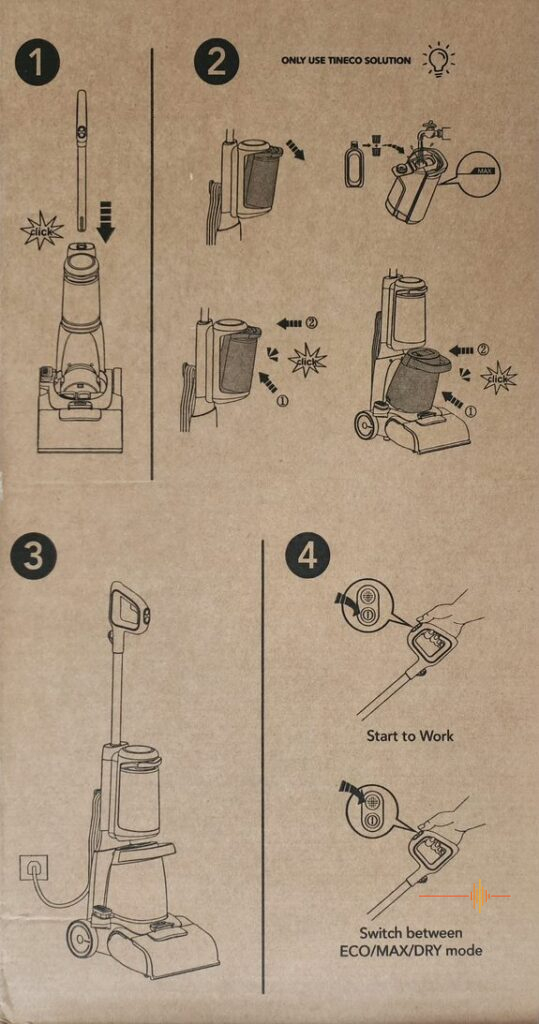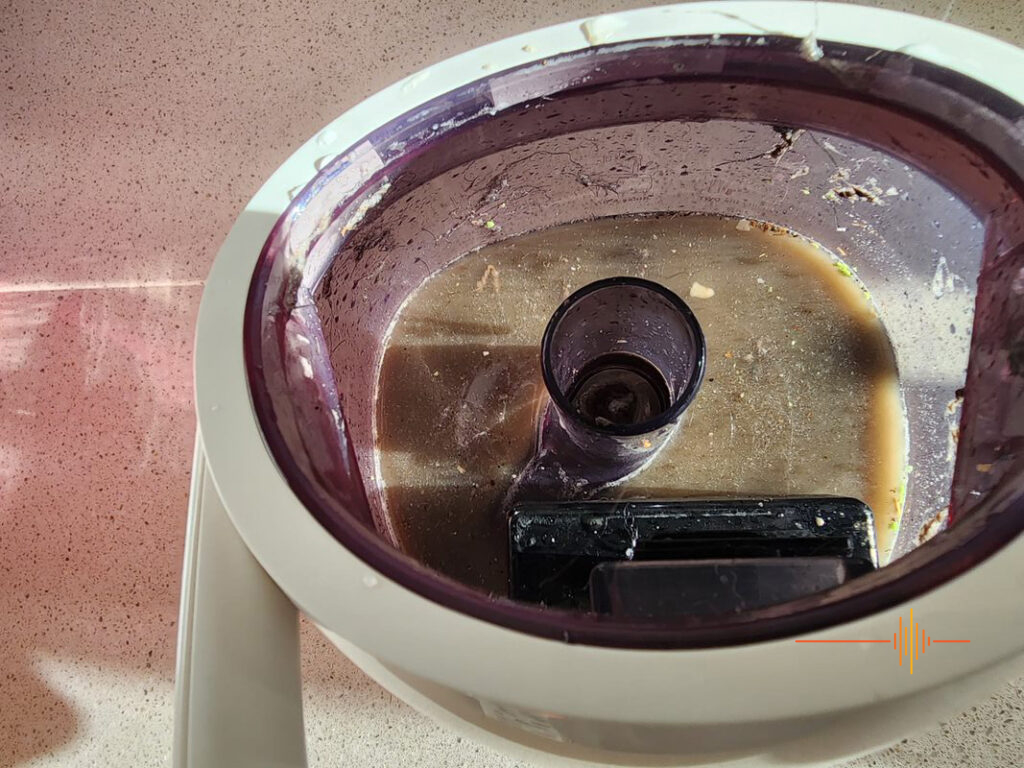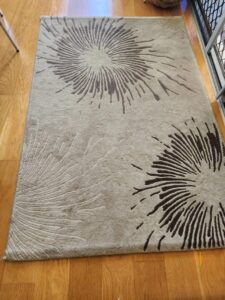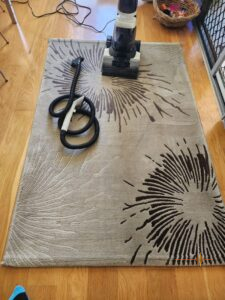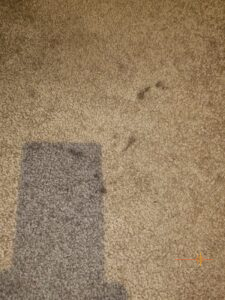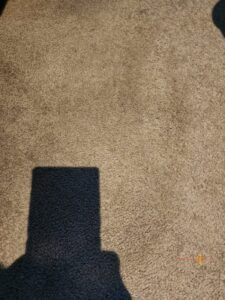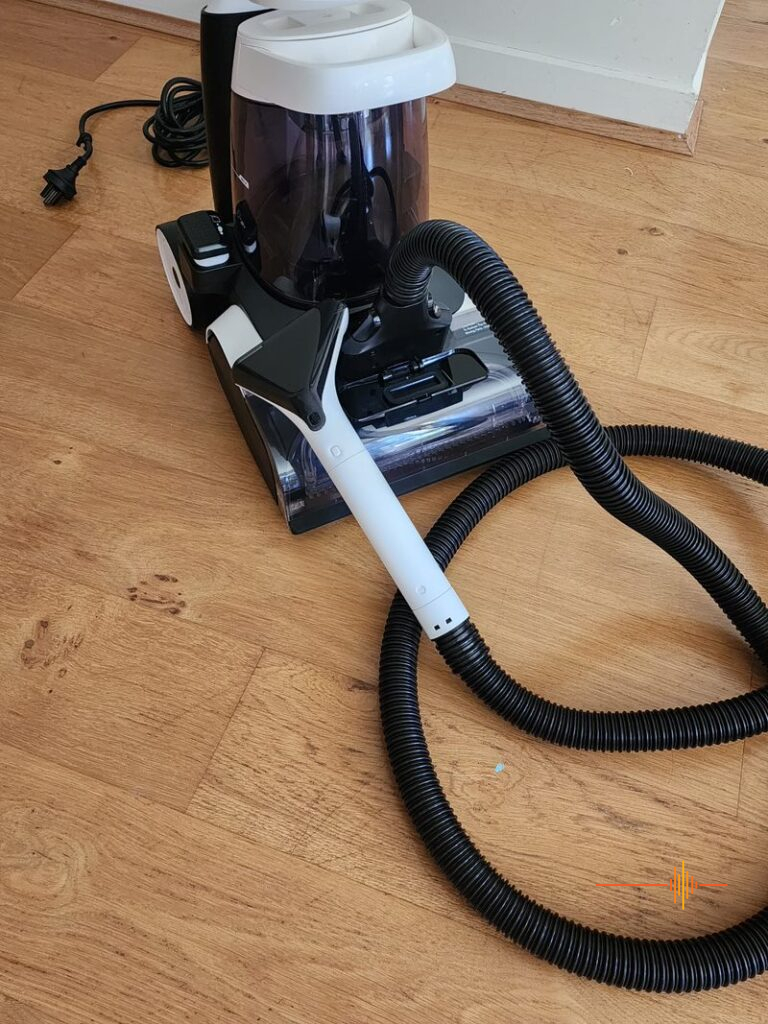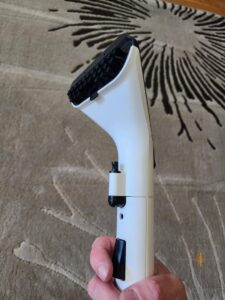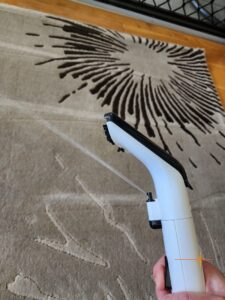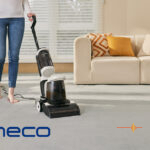The Tineco iCarpet features HeatedWash and PowerDry technology to dramatically reduce dry time. Lightweight, quiet and easy to maintain, iCarpet is your partner in tackling household stains, spills and ground in grime.
There’s nothing quite like the feeling of having brand new carpet. And the next best thing to new carpet is freshly cleaned carpet, but I was somewhat disturbed to read a fact that the majority of households never clean their carpets, except as part of Bond cleans or house sales.
Especially when I realised that, yep, I fell into that category. (And given my household includes multiple teenagers, a dog and a cat, I started picturing just how much dirt was going to be there.)
So when I was offered a chance to review Tineco’s iCarpet carpet cleaner, I jumped at the chance. And my carpets were certainly going to put it through its paces. So, just how well did it do?
Unboxing & First Impressions
I’ve said it in previous reviews repeatedly, but I’m a fan of clean (plain) asthetics when it comes to the packaging of tech products. And you can’t get any simpler than Tineco’s iCarpet. It’s a plain brown cardboard box with a simple line drawing of the device and various other advertising printed on each side.
It’s not attractive like some other tech products, but given the fact you’ll be throwing the packaging of this product almost straight into the recycling, it doesn’t need to be.
And, in a nice eco-friendly way, the quick start and assembly guide is printed on the top inner flaps of the box – right where it grabs your attention before removing the device itself.
Opening the box, everything is very neatly and logically stored. You’ve got the device itself (some assembly is required in the form of connecting the handle – a simple act of positioning it over the hole and pushing down gently till you hear the locking click) the user manual, a bottle of Tineco’s carpet shampoo, and a handheld suction device with attached 2.4m hose hose (more on that later.)
Once assembled, it’s a simple matter of filling the reservoir with water (and two capfuls of carpet shampoo) and plugging the power cord into the wall socket.
In short, the Tineco iCarpet was unboxed, assembled and ready to go in less than 5 minutes. Simple so far.
The device itself is slim, stylish and functional – possessing a clean water tank at the top, a wastewater tank beneath that, a rotating carpet brush, and a suction motor to scrub the carpets and pick up the dirty water respectively. The iCarpet adds a 40 degree heated wash and a 70-80 degree hot air blow to dry carpets (one of THE best things I have ever seen in a carpet cleaner.)
As a side note: Tineco also has a more expensive Carpet One Pro that (from what I can tell) adds an animated LCD screen, an App for your smartphone, and an iLoop sensor for smart cleaning modes. But the iCarpet does just fine without these things if you’re just looking for an easy clean.
The iCarpet measures 1110 (H) x 295 (D) x 415 (W) and weighs 13.5Kg empty – something to keep in mind if you’re going to need to carry it up or down stairs frequently.
On the handle are two buttons: a power button to switch the device on and off, and a second button to switch between the operating modes. These are:
- Eco (default)
- Max
- Dry (hot air only)
- Accessory (Engages automatically after attaching the hand-held nozzle and accessory hose.)
Most people will be able to use the default Eco mode by default. Although for stubborn stains, I found it helpful to use Max (and in one instance even the hand held accessory to get the best clean.)
There are also sensors for monitoring both the clean and wastewater tank capacity (although you can also look through the clear plastic sides of these reservoirs to easily check yourself) as well as one to ensure the roller brush hasn’t become tangled.
While operating, you squeeze the trigger to release water (for example while pushing the unit forward), and release it to commence suction (while pulling it back). If you return the handle (and reservoir tanks) to a vertical position, the device will automatically switch off. It’s a simple process that should become second nature extremely quickly.
Range of Usage
The iCarpet is designed to be used on carpets, such as level loop etc. That said, in my testing I used it on a range of different rugs and fabrics (even using the hand-held nozzle to clean car upholstery), so theoretically, any woven or pull-through, glued wool, or acrylic cut pile carpet should be fine (although you should always follow manufacturer’s recommendations).
That said, the iCarpet cannot be used on silk, antique rugs, older natural fibre woven rugs, carpet that gives off a higher level of ‘fuzz’ when vacuumed, feature rugs with long strands, or fabric marked for solvent cleaning / dry-cleaning only.
It’s also wise to try a small, preferably out-of-sight test area first. Tineco themselves recommend in the user manual to take a test spot, and then gently rub the surface with a damp white cloth, waiting ten minutes, and then testing for colour removal or bleed with a white paper towel.
So naturally I ignored the instructions, and the manufacturer’s recommendations and jumped straight into cleaning a rug that sits just in front of an entry door – one used frequently by people and animals alike – one that isn’t worth a lot (in case I ruined it with my haste to ignore spot testing,) – but one that, besides vacuuming, hadn’t been properly cleaned in years.
Rug Cleaning
Keep in mind I am not a carpet cleaning professional, and while the instruction manual covers maintenance and operation of the iCarpet, there were no tips or tricks included on how to get the best out of the device, or how to ensure the best carpet clean.
Once powered on, if you return the cleaner to full vertical it will turn off automatically. To keep the cleaner operational, you need to hold the handle like you would a hand-held vacuum – that is, at an angle to the floor. There’s two buttons, a power button to switch it on, and a second button to activate Max mode.
It did an okay job. It didn’t leave the rug looking like new after the first pass, but did pull up a LOT of dirt. But it was then that I decided to re-read the manual…. And try Max mode. And WOW, talk about user error being the cause of my so-so first impression: after a second sweep on the MAX setting, the rug looked MUCH better.
There were still a few minor stubborn stains that hadn’t come out though, so I decided to attach the accessory hose and try the hand held nozzle. This is even simpler to operate than the main unit, as it is always applying suction. A manual trigger sprays a small amount of water at whatever you are aiming at – making it great for targeting those stubborn stains, as well as applying just the right amount of liquid cleaner to the spot.
After these two runs (which took a total of about fifteen minutes in total) the rug looked good. I wouldn’t go as far as to say it was at the level of a professional rug clean, but then the price of those would be more than the rug was worth.
But the Tineco iCleaner was certainly off to a good start. So, on-to the carpets.
Tank Capacity
But first a slight aside: The clean water reservoir on the Tineco iCarpet holds about 2L of water, plus two capfuls of the included Tineco Carpet Deoderising and Cleaning Solution. This reservoir size should last you for about 10m2 of carpet area – though when doing the rug I found it drained the entire reservoir thanks to my prolific use of the manual spray and the double clean.
The cleaning solution included is 500ml, and after 2 full cleans of my 5 bedroom house (and the rug) is about half empty. You can buy 1L bottles (retailing for around $25 at time of writing) from a number of Australian retailers.
The ingredients of this cleaner are listed on the bottle as:
- Greater than 30% water
- Less than 5% Fatty Acid Methyl Ester Sulfonates
- Potassium Cocoate
- C9-11 Alcohols Ethoxylated
- Methoxyisopropanol
- Benzisothiazolinone
- Polyether
- Modified polydimethylsiloxane
- Parfum
If I recall my high school chemistry correctly, these are safe to use detergents, solvents / grease cutters, antimicrobials, wetter / spreaders and perfume, with the C9-11 being an alternative to ammonia.
It smells nice, not overpowering or domineering for those with a sensitive sense of smell (and lacking the chemical smell of a lot of cleaners,) and does the job well. I will note however that it creates a LOT of bubbles if you add the solution first, before filling the reservoir with water.
Carpet Cleaning
After refilling the 2L reservoir, I moved onto the carpet in the bedrooms.
The carpets in the bedroom are old, and each possessed a mix of stubborn stains. But after a single pass on Eco, most came up looking and feeling revitalised. The few stubborn stains were lifted with judicious application of the Max setting.
I washed the carpet a couple of times over the period I had the cleaner, and while the carpet appearance didn’t become noticeably different on subsequent cleans, the amount of dirt in the wastewater reduced significantly in most of the bedrooms.
Unfortunately, cleaning the carpets was where a few downsides also made themselves apparent with the iCleaner. The cleaning unit has a 280mm water delivery width, but a 220 mm brush. That leaves 30 mm on each side of the cleaner that can’t be cleaned.
This means you will have to turn the unit to face the wall, moving sideways along the wall – which will allow you to get a little closer to the edge of the room, but still not completely to it. It also means if you have a lot of furniture you can’t move you will have a small rim around these also.
This can be corrected by using the hand-held attachment which allows you to get right to the edge, but it is still a bit of a pain.
Maintenance
The other downsides were related to maintenance.
For starters: the clean water tank has a slight ridge around the filling cap on the inside, which prevents ALL of the water being emptied through tipping it out. It’s not much water, but it’s enough to be annoying. Likewise, the dirty water reservoir has a few ‘nooks and crannies’ where dirt can get trapped, meaning you’ll have to rinse it out a few times (and possibly utilise an old toothbrush or scrubbing brush) to ensure you remove everything.
The front of the cleaner also detaches, and you can clean the brush, water delivery system, the small foam filter, and the vacuum mouth. Unfortunately, because you are unable to open the vacuum mouth attachment, it takes a LOT of effort to clean – especially given the iCarpet’s habit of sucking up all the dog and cat hair the vacuum cleaner left behind. I had to resort to using a straw cleaner to get all of the gunk out of it.
While most people (especially those without pets) probably won’t encounter the same level of issue, Tineco may want to consider a slight redesign for the future to allow the suction mouth to be opened for easier cleaning.
Drying Feature
The Tineco iCarpet has a PTC (Positive Temperature Coefficient) heater. This means that it cannot over-heat, is self-regulating, and provides a consistent temperature output.
This is perfect for the hot air blow dry feature, which is, quite literally, one of the best things about the iCleaner.
The biggest downside to any carpet cleaning – especially professional cleaning – is the hassle of removing all the furniture from a room, and then not being able to walk on it for a day (or having to put down towels, and still getting damp feet).
Tineco have practically solved that issue with the iCleaner. With a single pass over the carpet in drying mode, the carpet was left nearly dry to the touch, but it was able to be walked on immediately. And as a result, it was completely dry in only a couple of hours – far faster than anything I’ve experienced before.
With a second pass of the heated air dry, it felt dry to the touch immediately. As a result I didn’t have to fully disassemble heavy furniture, or play a delicate game of getting wide objects through narrow doorways and back for the cleaning. I could quite literally drag a piece of furniture to one side, clean and fully dry the carpet, and then drag the furniture back into place.
It is a game changer, and having experienced it, I don’t think that I could go back to a cleaner without it.
Final Thoughts
For the price, the Tineco iCarpet is a very good consumer-grade carpet cleaner. It won’t trick anyone into thinking your carpets are brand new. But it will give them a decent clean, especially if used every couple of months.
With the features included, and the added flexibility of the hand-held attachment – allowing you to clean your fabric car seats and outdoor furniture as well – if you are in need of a carpet cleaner, I’d recommend you forget about the commercial units offered by supermarkets, and pick yourself up one of these.
I think the biggest eye opener from the Tineco iCarpet is just how bad a job my Dyson vacuum cleaner was doing – given the amount of dog hair it picked up in the carpet cleaning.
Which is also my recommendation for Tineco – a few slight tweaks to the design to make it easier to clean dog hair out of, and the iCarpet would move from being very-good to great at its price point.
I would like to thank Tineco for the loan of the iCarpet.


